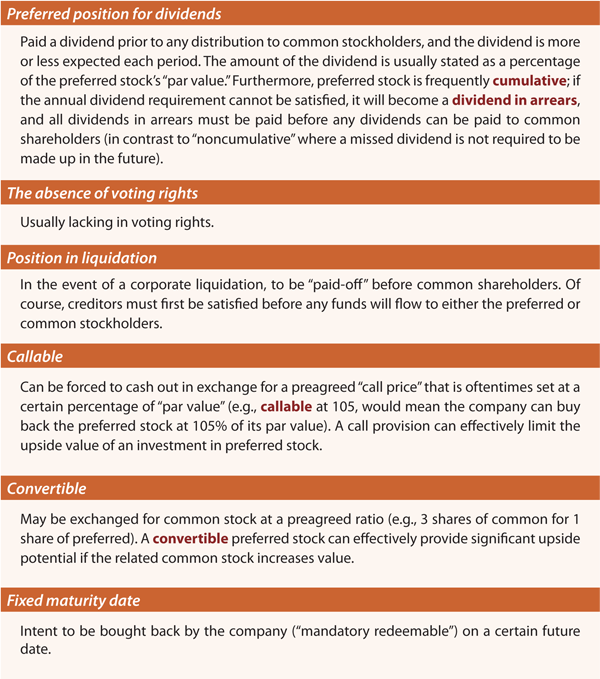PFF Why You Should Give Preferred Stocks Another Look
Post on: 13 Июль, 2015 No Comment

Recent Posts:
PFF: Why You Should Give Preferred Stocks Another Look
Preferred stocks don’t receive much attention, but maybe its time that changed. The asset class, which investors can access easily via the iShares U.S. Preferred Stock ETF (PFF ), offers the compelling combination of competitive returns, low risk and an outstanding yield.
And yet, PFF has just $9 billion under management just a fraction of the $157 billion held in the SPDR S&P 500 ETF (SPY ).
Based on a number of measures, it looks like investors are missing an opportunity.
Why Investors Should Love PFF
The first benefit of preferred stocks is, of course, their yield. PFF currently offers an SEC yield of 5.8%, well above the 1.9% available on SPY.
Notably, that sizeable yield is also well ahead of the 4.5% to 4.8% dividend yields that investors can earn on index-linked high-yield bond ETFs.
Investors typically associate yields as high as PFF’s with lower total return potential, but that’s not the case here. The outstanding yield on iShares U.S. Preferred Stock ETF has contributed to its five-year average annual return of 16.5%, which is in the neighborhood of the 19.2% annualized gain for SPY.
The key consideration here is that PFF has achieved these returns with a lower level of risk: Its five-year beta is 0.7 and its three-year beta is just 0.42.
In this sense, the preferred stock ETF would have lagged the return of the broader market, but investors still would have earned outstanding returns for the risk.
How Much Does the Bond Market Matter for Preferred Stocks?
One knock on preferred stocks is that they’re sensitive to interest-rate movements. Last spring, for instance, PFF was hit for a loss of 6.1% during the spike in bond yields that occurred from May 3 through June 24 far below the 2.2% loss for SPY in that same time frame.
This downturn might raise concerns of what might happen to preferred stocks if the long-awaited collapse in the bond market finally materializes.
Preferreds undoubtedly will take a hit anytime rates rise as violently as they did last spring. Still, there is an important reason why bond market performance might not be a major issue as long as yields increase in a controlled fashion: preferreds yield spreads.
With a current yield advantage of 3.2 percentage points over Treasuries, the impact of a gradual rise in the 10-year say, from 2.6% to 3% doesn’t have nearly as much of an effect on preferred stocks yield spread as it would with lower-yielding assets.
This is likely to be a plus once the Fed starts raising short-term rates, since a move from near zero to 0.25% in the fed funds rate will take a bigger performance bite out of lower-yielding, high-quality bonds than it will from an asset class with yields near 6%.
If anything, an increase in bond yields might be a positive in that it would be a signal of better growth a plus for preferred stocks given their sensitivity to credit conditions.
Finally, the element of rate sensitivity in preferred stocks doesn’t necessarily have to be a headwind since bonds and stocks have demonstrated a high and increasing negative correlation in recent years. As long as this pattern holds, any major drop in stock prices is likely to be accompanied by a rally in bonds. This imbues preferred stocks with important defensive qualities, and it allows them to play the role traditionally filled by balanced fund although with a much higher yield.
The risk to this story is a market in which a sharp increase in bond yields is accompanied by a sudden downturn in stock prices a combination that occurred last spring. However, as long as the Federal Reserve manages its communications effectively, there’s a low probability that same scenario will repeat itself in the immediate future.
Low Beta Isn’t Necessarily a Negative Right Now
This brings us to the next critique of preferred stocks: Since they don’t keep up with the major equity indices during bull markets, investors are leaving money on the table by owning funds such as PFF.
While that may be true, low beta soon might become a positive attribute given that SPY’s current five-year average annualized return is a hefty 19.2%. With such strong returns in the books and valuations becoming stretched, a measure of defensiveness might not be a bad idea right now.
The past two weeks provide an illustration: From April 2 through April 14, SPY fell 3.1% while the iShares Russell 2000 ETF (IWM ) was hit for a loss of 6.5%. In that same time frame, the PFF managed to generate a gain of 0.2%. And in 2008, PFF finished 13 percentage points ahead of the broader market, losing 24% vs. the 37% downturn in SPY.
Bottom Line
Preferred stocks won’t capture all of the market’s upside over the long term, but their risk-reward profile makes them a compelling option for yield-seeking investors especially if stocks begin to exhibit shakier performance in the months ahead.
Like what you see? Sign up for our ETF Insights e-letter and get picks and advice about these diverse funds delivered to your inbox every Friday!
As of this writing, Daniel Putnam did not hold a position in any of the aforementioned securities.














